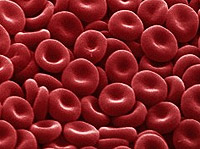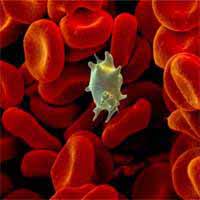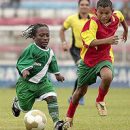During the baby tooling, women are brought to hand over blood test. Many times. And this is not a whim of doctors. After all, it is the blood test that can be the first signal of the development of a life-threatening state of the state in the DVS syndrome. Read more about this issue below.
Content
Coagulogram and its main components
Coagulogram is a study of blood coagulation system. Coagulogram allows you to identify the peculiarities of the collapse in pregnant women and some complications of pregnancy and, therefore, to carry out the right treatment.
During normal pregnancy, the activity of the coagulation system of blood as a whole increases. This is a natural process associated with the advent of the uterine-placental circle of blood circulation. It is due to the fact that the body of pregnant woman is preparing to increase blood volume during the baby tooling and to the possible blood loss during childbirth.
Coagulogram should be taken once in trimester, and if there are deviations of hemostasis indicators (a set of components of blood vessels and blood, the interaction of which ensures the maintenance of the integrity of the vascular wall and stopping bleeding during blood damage) - more often, by appointment of a doctor.
Blood for analysis take from vein in the morning on an empty stomach.
List some parameters of the coagulogram:
- Fibrinogen - protein, fibrin predecessor, which makes up the basis of a bunch with blood coagulation. Fibrinogen is a sensitive indicator of inflammation and necrosis (samples) of tissues, the main plasma protein affecting the value of the EEE (erythrocyte sedimentation rate). It increases with an increase in fibrinogen concentration. During the pregnancy, starting from the end of the first trimester, a natural increase of the plasma fibrinogen content occurs and reaches the maximum values on the eve of delivery. This is due to the advent of an additional circulation of blood circulation - the uterine-placental.
- ACTV - Activated Partial Thromboplasty Time. This is the coagulation time, depending on the presence of coagulation factors. Definition of the APTTV, along with other indicators, is used in the diagnosis of disseminated intravascular coagulation syndrome, which is described below. Pregnant women marked the shortening of the AFTV due to an increase in the amount of fibrinogen.
- Thrombin Time (TV). This is the time of the last blood coagulation stage: the formation of fibrinogen fibrin under the action of thrombin. Considering that during pregnancy, the content of fibrinogen increases, therefore, thrombin time is lengthened, but remains within the specified limits. The definition of TV is used in order to identify defects for fibrinogen production (for example, fibrinogen can increase in the pathology of the liver) and evaluating blood anticular activity.
The mechanism of the coagulation system of blood
Blood coagulation process consists of several stages. At the first stage, a special substance is highlighted in a mechanical or chemical damage to the wall of the blood vessel - a thromboplastin that launches the coagulation reactions.
Platmetes are uniform blood elements. Frame platelets in the bone marrow. Moderate reduction in platelets can sometimes be observed in healthy pregnant women. Thrombocytopenia - a significant decrease in the number of platelets - may arise as a result of a reduction in the formation of platelets, increasing their destruction or consumption. The formation of platelets is reduced during malnutrition. Consumption of platelets is increased by DVS syndrome.
In contrast, the coagulation system in the body works an antoslude system. The coherent work of these systems allows you to maintain a normal blood condition.
DVS syndrome as a complication of pregnancy
 Coagulogram should be taken once in trimester, and if there are deviations of hemostasis indicators - more often, by appointing a doctor.
Coagulogram should be taken once in trimester, and if there are deviations of hemostasis indicators - more often, by appointing a doctor.
Balance between coagulation and anticular systems is maintained due to the interaction of platelets, coagulation factors and fibrinolysis process. Violation affecting any of these links may cause serious pregnancy complications. Among these complications, the most dangerous is the DVS syndrome (disseminated intravascular coagulation). This syndrome develops due to activation of the coagulation system - on the one hand, and the fibrinolysis system - on the other.
DVS-syndrome in pregnant women can be caused by different reasons. Among them:
- Premature pairing placenta - detachment of a normally located placenta before the birth of a child. In 80% of cases, this disease is accompanied by bleeding from sex tract, sometimes a hematoma for the placenta is formed. Bleeding is associated with a decrease in plasma concentration of coagulation, fibrinogen and platelets;
- Embolia with octoloplodic waters - a rare, but dangerous complication, develops during complicated clans, is due to the intake of ferrous waters in the mother's blood flow, the lung vessels, which leads to acute respiratory failure and shock. DVS syndrome develops due to massive admission to the blood flow of the tomb thromboplast - substance that runs the process of blood coagulation;
- Endometritis - Inflammation of the inner shell of the uterus - developed after delivery, may complicate the lightning form of the DVS syndrome.









